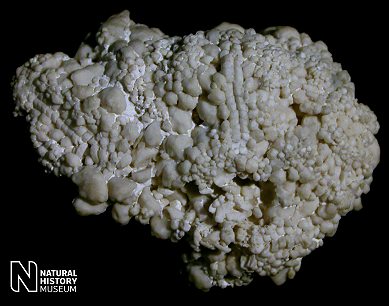 A A |
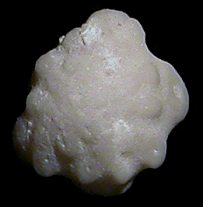 B B |
|
Valettaster argus |
An unusual asteroid of the White Chalk, with a domed, cushion-shaped body. The ossicles are highly irregular rounded cones, smooth at the apex, but with distinctive furrows and tubercles around the sloped sides. Articulated remains are scarce but isolated ossicles are common. Exceptionally preserved specimens retain an outer coat of small granular ossicles which obscure the larger and more distinctive ossicles. The similar Valettaster ocellatus is larger and its ossicles more flattened with a broad, flat apex.
 A A |
 B B |
1). (A) Oral view of an exceptionally preserved individual (x2.2, Seaford Chalk Formation, Micheldever, Hampshire, Blackmore Collection, BMNH (British Museum (Natural History) London) E20294); (B) Outer surface of a typical isolated ossicle (x14, Seaford Chalk Formation, Micheldever, Hampshire, Blackmore Collection, BMNH E20491-E20559). Images © 2005 The Natural History Museum, by kind permission.
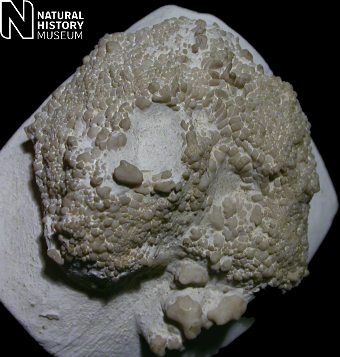 A A |
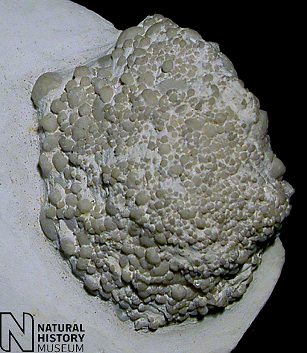 B B |
2). Aboral views of two well preserved individuals; (A) x2.2, Bowerbank Collection, BMNH (British Museum (Natural History) London) E2636; (B) x3.0, BMNH 46770. Images © 2005 The Natural History Museum, by kind permission.
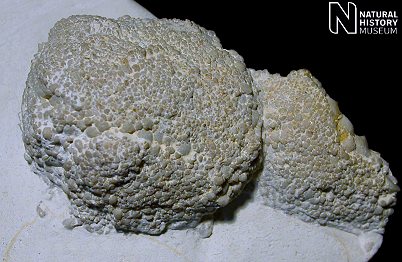 A A |
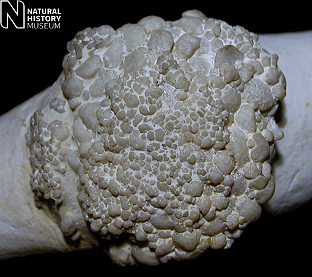 B B |
3). Aboral views of three well preserved individuals retaining the granular outer coating, broken away in places to reveal the larger and more distinctive ossicles; (A) x1.8, White Chalk, Charlton Kent, Ogle Collection, BMNH (British Museum (Natural History) London) E344b. These specimens are associated with an exceptional example of Manfredaster bulbiferus (see the whole specimen); (B) x2.7, Southern England, BMNH 46770. Images © 2005 The Natural History Museum, by kind permission.
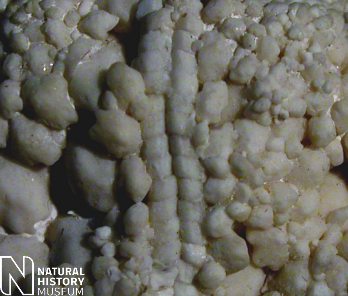 A A |
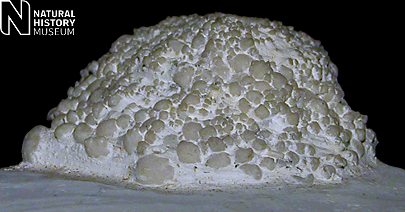 B B |
4). (A) Detail of an exceptionally preserved ambulacral groove (x7.5, Seaford Chalk Formation, Micheldever, Hampshire, Blackmore Collection, BMNH (British Museum (Natural History) London) E20294); (B) Lateral (side) view of a complete specimen, showing the simplistic domed profile (B) x3.5, BMNH 46770. Images © 2005 The Natural History Museum, by kind permission.
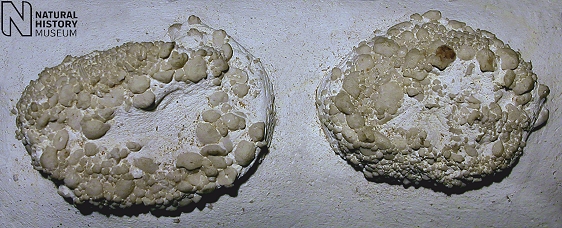 |
5). An associated pair of well preserved specimens; x1.7, Southern England, BMNH (British Museum (Natural History) London) 46770. Image © 2005 The Natural History Museum, by kind permission.
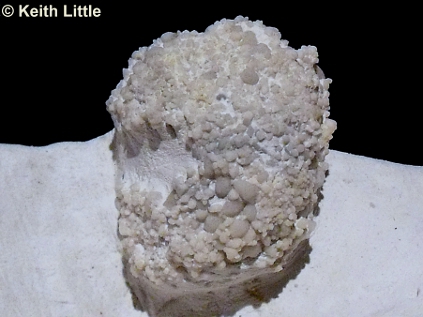 |
6). Aboral view of a seemingly semi-complete individual (x3.0, Seaford Chalk, Thanet Coast, Kent, in the collection of Keith Little). Image © 2011 Keith Little, by kind permission.